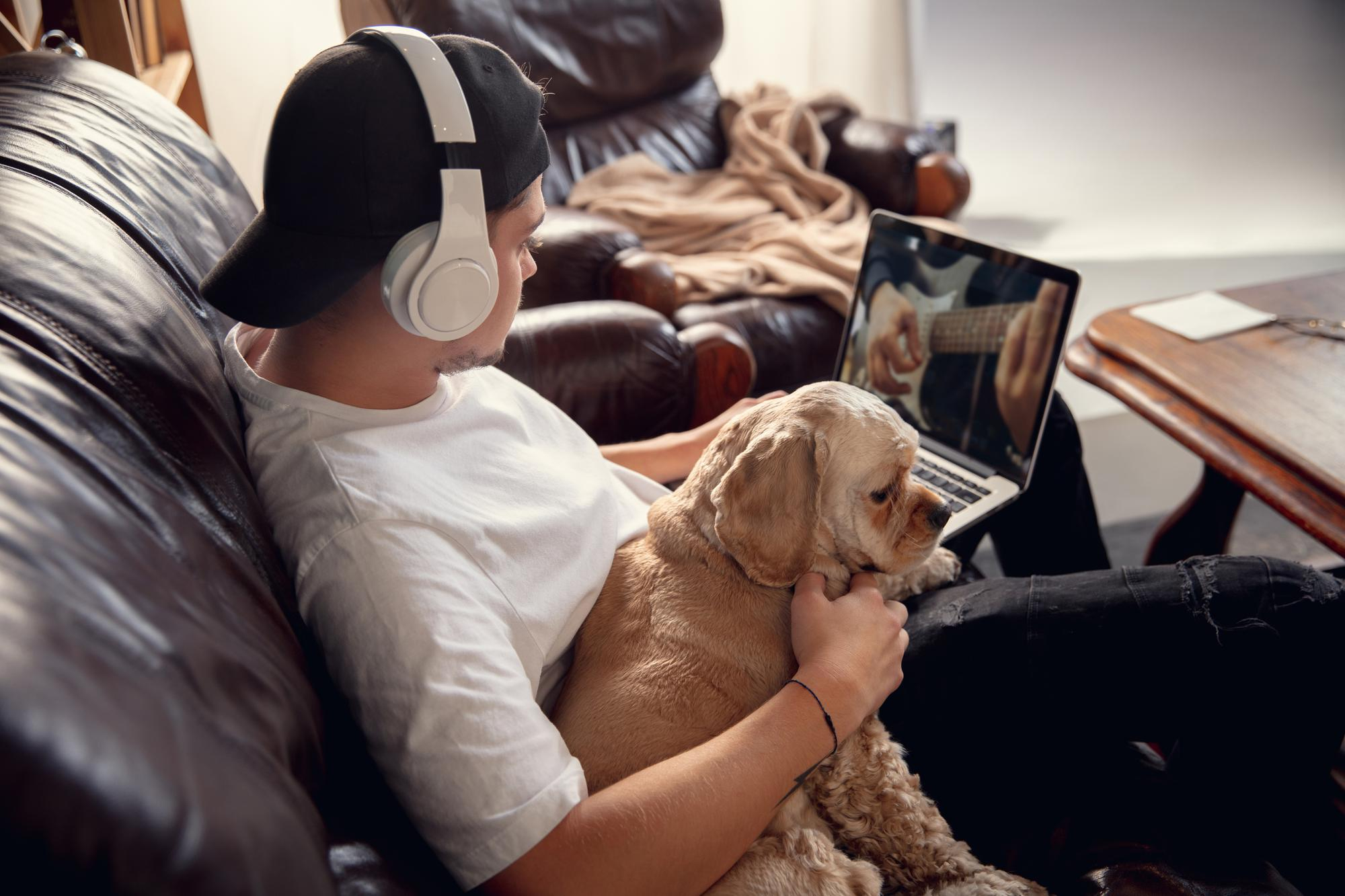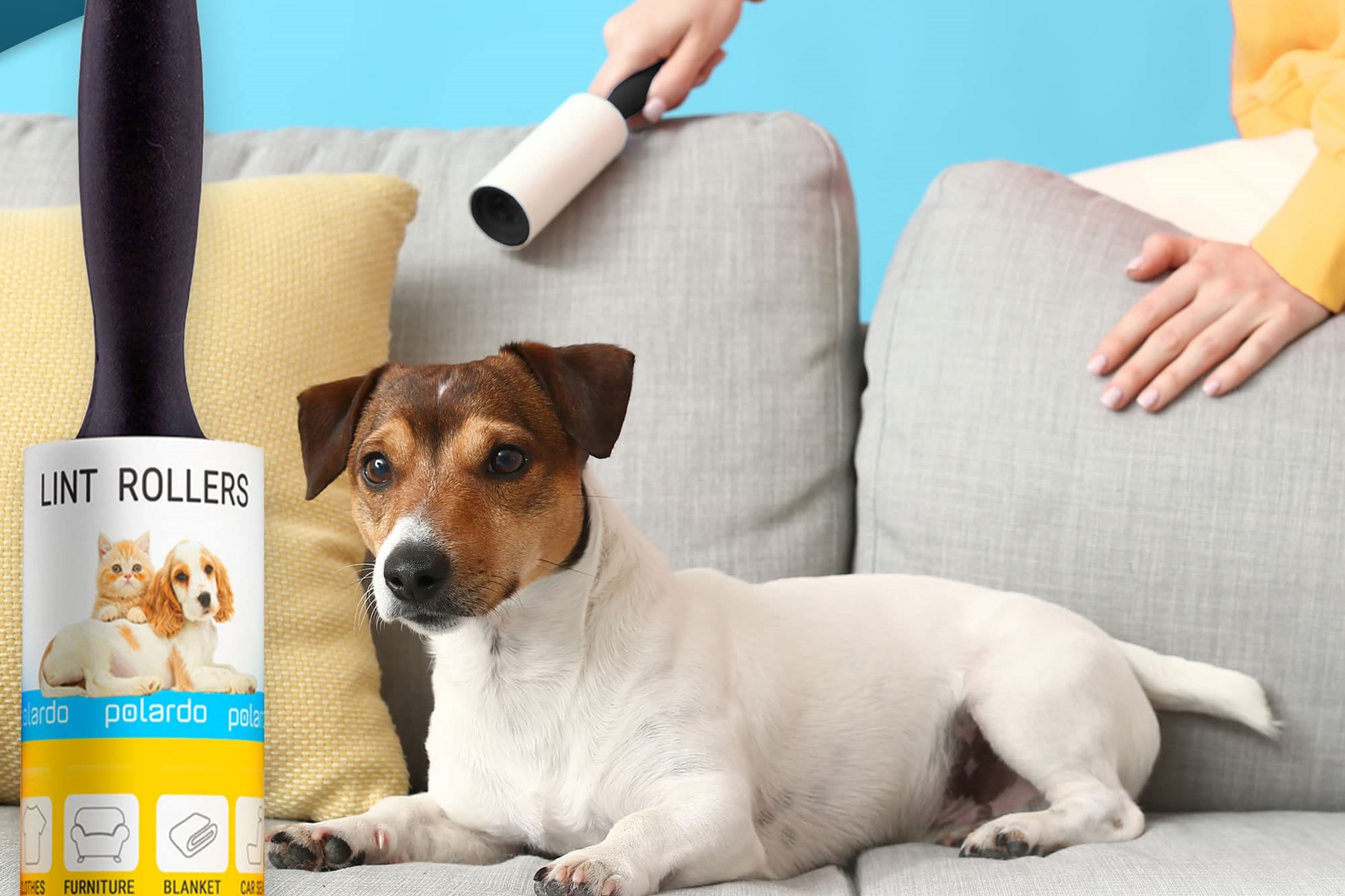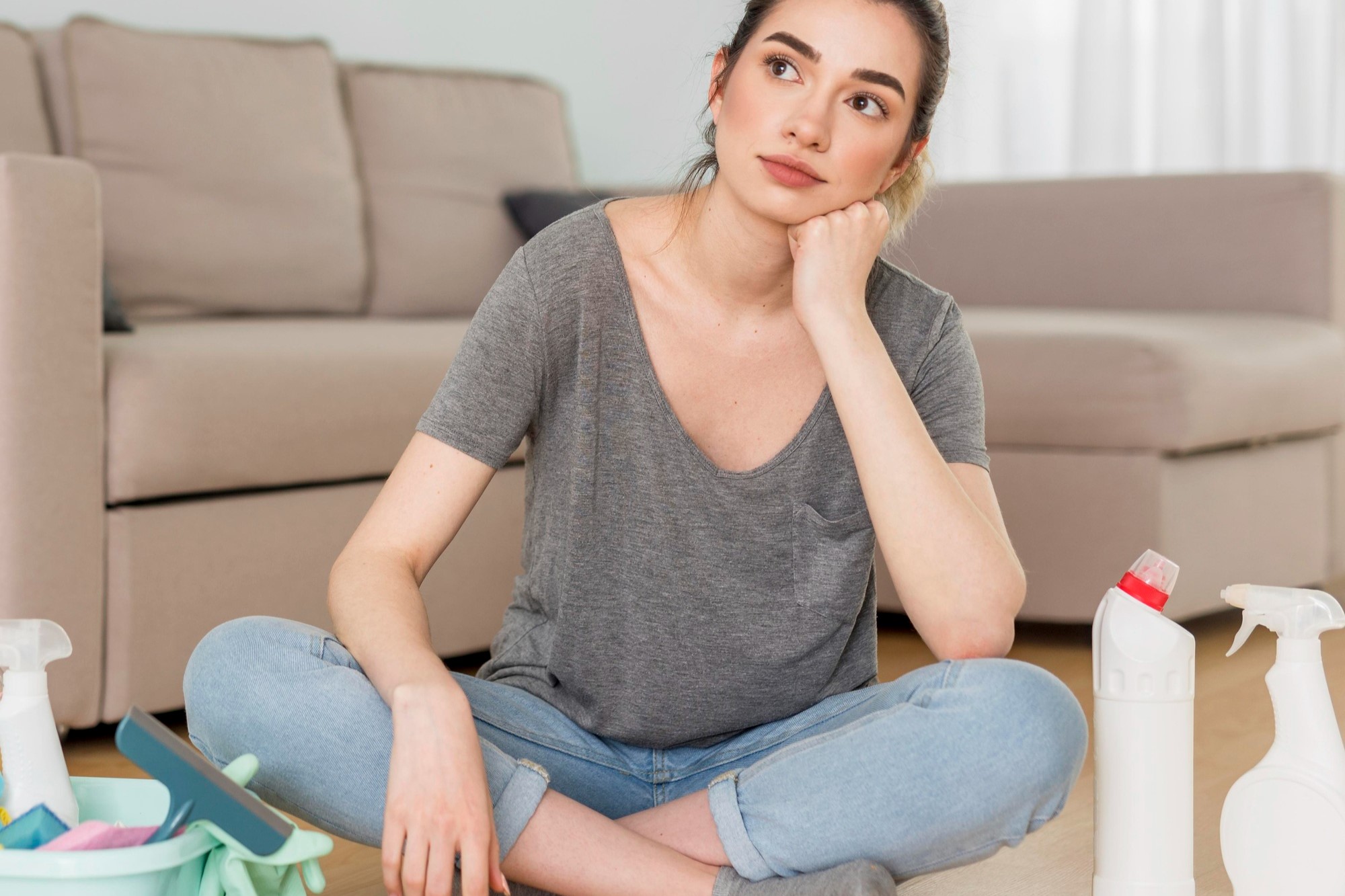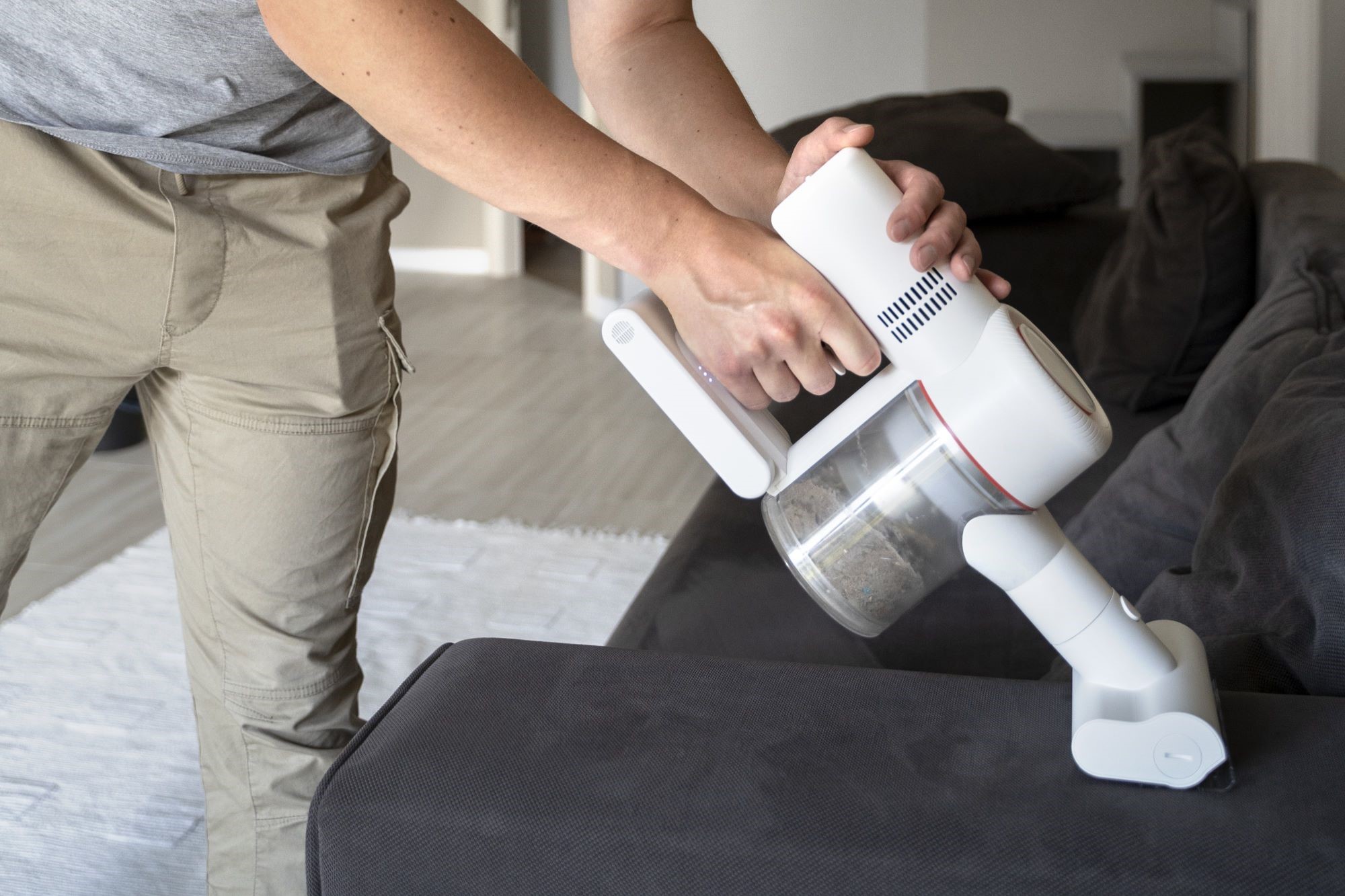If you’re a pet owner, you’re well aware of the constant challenge of managing pet hair. From the soft, sleek surface of your leather couch to the cozy armchair, pet hair seems to find its way into every nook and cranny. Leather furniture, while luxurious and durable, can be a magnet for pet hair. This guide provides a thorough and detailed approach to effectively clean pet hair from leather furniture, ensuring that your home remains stylish and hair-free. Let’s embark on a journey to restore the pristine condition of your leather pieces!
Why Pet Hair Sticks to Leather Furniture
Understanding why pet hair adheres to leather is key to effective cleaning. Leather, though smooth, is slightly porous. This texture allows hair to settle in, making it stick more stubbornly compared to other surfaces. Additionally, the static electricity generated by leather can attract pet hair, compounding the problem.
The Nature of Leather
Leather, with its unique texture and finish, tends to attract and hold onto hair. The type of leather—whether it’s full-grain, top-grain, or bonded—can affect how easily pet hair sticks and how it can be cleaned.
- Full-Grain Leather: This high-quality leather has a natural grain and is the most durable but can be more prone to showing hair.
- Top-Grain Leather: Slightly more processed, it’s still high-quality but may have a smoother surface compared to full-grain leather.
- Bonded Leather: Made from leftover leather fibers, it can have a smoother surface that might be more challenging to clean.
Essential Tools and Supplies
Equipping yourself with the right tools makes cleaning pet hair from leather furniture a lot easier. Here’s a comprehensive list of what you’ll need:
- Vacuum Cleaner: Preferably with a brush attachment to avoid scratching the leather.
- Lint Roller: A roller with extra sticky sheets works wonders for picking up pet hair.
- Rubber Gloves: These create friction to lift hair from the leather surface.
- Microfiber Cloths: Essential for wiping and polishing without scratching.
- Leather Cleaner: Optional but beneficial for a deep clean.
- Soft Brush: For gently brushing away hair from textured areas.
Choosing the Right Tools
When selecting tools, consider their impact on leather. For instance, vacuum cleaners with hard or rotating brushes can scratch, so always opt for softer attachments. Lint rollers are excellent for quick jobs, while rubber gloves offer a more hands-on approach.
Step-by-Step Guide to Removing Pet Hair
Let’s delve into the step-by-step methods for tackling pet hair on your leather furniture.
1. Vacuum the Furniture
Vacuuming is an essential first step in removing loose pet hair from leather furniture.
Why Start with Vacuuming?
Vacuuming helps remove the majority of loose hair and debris. This step also prepares the surface for further cleaning, ensuring that other methods are more effective.
Steps to Follow:
- Attach the Brush Tool: Ensure your vacuum cleaner has a brush attachment to prevent damage to the leather.
- Vacuum Thoroughly: Start from one end of the furniture and work your way across the entire surface. Pay close attention to seams, crevices, and areas where hair might be trapped.
- Empty the Vacuum: If you notice the vacuum bag or canister filling up quickly, empty it to maintain suction power.
Tips for Effective Vacuuming
- Use a Low Setting: For leather furniture, a lower suction setting can prevent damage.
- Check the Attachment: Ensure it’s clean and free from any debris that could scratch the leather.
2. Use a Lint Roller
A lint roller is a quick and effective tool for picking up pet hair from leather surfaces.
What Makes a Lint Roller Effective?
Lint rollers use sticky sheets to pull hair off the surface, making them ideal for a fast cleanup.
Steps to Follow:
- Roll Over the Surface: Apply firm, even pressure while rolling the lint roller over the leather.
- Replace Sheets as Needed: If the sheets become saturated with hair, replace them to maintain effectiveness.
Advantages of Lint Rollers
- Ease of Use: Quick and convenient for daily maintenance.
- Portable: Can be used anywhere and doesn’t require electricity.
3. Try Rubber Gloves
Rubber gloves can be surprisingly effective for removing pet hair, thanks to the friction they create.
How Do Rubber Gloves Work?
Rubber gloves create a static charge that helps lift hair from the leather surface, especially effective in crevices and textured areas.
Steps to Follow:
- Put on the Gloves: Slightly dampening them can enhance their effectiveness.
- Rub the Leather: Use a back-and-forth motion to gather the hair.
- Wipe Clean: After collecting the hair, use a microfiber cloth to wipe away any remaining debris.
Benefits of Rubber Gloves
- Affordable: Inexpensive and readily available.
- Gentle on Leather: Provides a non-abrasive method for hair removal.
4. Use a Soft Brush
A soft brush can be particularly useful for removing pet hair from textured or creased areas of leather.
When to Use a Soft Brush?
If pet hair is embedded in seams or textured areas, a soft brush can dislodge and remove it effectively.
Steps to Follow:
- Brush Gently: Move the brush in the direction of the leather grain to avoid scratching.
- Collect Hair: Use a vacuum or lint roller to pick up the loosened hair.
Choosing the Right Brush
- Soft Bristles: Opt for a brush with soft bristles to prevent damage.
- Size and Shape: Choose a brush that fits the size and shape of your furniture for best results.
5. Clean with Leather Cleaner
For a deeper clean and to maintain the leather’s condition, consider using a leather cleaner.
Why Use Leather Cleaner?
Leather cleaners help remove additional grime and hair, while also conditioning the leather to keep it supple and looking new.
Steps to Follow:
- Apply Cleaner: Follow the manufacturer’s instructions for application.
- Wipe with a Microfiber Cloth: Use a clean cloth to gently clean the surface, removing any remaining hair.
- Dry Thoroughly: Ensure the leather is completely dry before using the furniture again.
Choosing a Leather Cleaner
- pH Balanced: Ensure the cleaner is pH balanced to avoid damaging the leather.
- Conditioning Properties: Opt for a cleaner that also conditions the leather.
Preventive Measures to Reduce Pet Hair Build-Up
Taking preventive measures can significantly reduce the amount of pet hair that accumulates on your leather furniture. By incorporating these strategies into your routine, you can manage pet hair more effectively and maintain the cleanliness and appearance of your leather items.
Regular Grooming of Pets
Grooming your pets regularly is one of the most effective ways to minimize shedding and reduce the amount of hair that ends up on your furniture. Regular grooming helps manage the amount of loose hair your pets shed, keeping it from settling on your leather furniture.
Effective Grooming Tips
Brush your pets frequently using a high-quality brush that is appropriate for their coat type. Regular brushing helps remove loose hair and prevents it from ending up on your furniture. Bathing your pets on a regular basis also contributes to reducing loose hair. While baths should not be overly frequent, incorporating them into your pet care routine can help manage shedding.
Additional Grooming Practices
Consider using grooming tools specifically designed to reduce shedding, such as de-shedding brushes or grooming gloves. These tools can be particularly effective for pets with longer coats or those that shed heavily. Additionally, maintaining a consistent grooming schedule can help keep shedding under control and prevent excessive hair from accumulating.
Use Pet Furniture Covers
Furniture covers or throws provide a protective barrier between your pets and your leather furniture. By using covers, you can reduce the direct contact between pet hair and your furniture, making cleaning easier and less frequent.
Choosing Furniture Covers
Select covers made from washable materials that are easy to clean and maintain. Machine-washable covers are particularly convenient, as they can be easily removed and cleaned when necessary. Ensure that the cover fits well and complements your décor, both in terms of style and functionality. Custom-fit covers can provide a more tailored look, while slipcovers offer versatility and ease of use.
Maintaining Furniture Covers
Regularly wash and replace the covers to keep them fresh and free of hair. This not only helps in maintaining a clean appearance but also prolongs the life of both the covers and your leather furniture. In addition, consider using slipcovers or throws that are designed to be easily removed and washed, making maintenance a breeze.
Maintain a Clean Home Environment
Keeping your home environment clean can significantly reduce the amount of pet hair that ends up on your leather furniture. By addressing pet hair throughout your home, you can create a cleaner living space and minimize the buildup of hair on your furniture.
Home Cleaning Tips
Vacuum floors, carpets, and other surfaces regularly to manage pet hair and prevent it from accumulating. Use a vacuum cleaner with a high-efficiency filter to capture pet dander and hair effectively. In addition, employing air purifiers can help remove pet dander and hair from the air, reducing the overall amount of hair that settles on your furniture.
Additional Cleaning Practices
Incorporate regular dusting into your cleaning routine to remove pet hair from surfaces and reduce its spread throughout your home. Use microfiber cloths to trap dust and hair, and consider using a pet-specific cleaning spray for additional assistance. Regular home cleaning not only helps manage pet hair but also contributes to a healthier and more pleasant living environment.
Table of Cleaning Methods
Here’s a comparative table of the various cleaning methods for pet hair on leather furniture:
| Method | Description | Pros | Cons |
| Vacuum Cleaner | Removes loose hair effectively | Quick and efficient | May not reach all areas |
| Lint Roller | Sticky sheets pick up hair | Easy to use, portable | Sheets can become full |
| Rubber Gloves | Friction helps lift hair | Good for crevices, inexpensive | Requires manual effort |
| Soft Brush | Gentle brushing to remove hair | Effective for textured areas | May scratch if not used properly |
| Leather Cleaner | Deep cleaning and hair removal | Cleans and conditions leather | Additional step required |
Common Mistakes to Avoid
When maintaining leather furniture, especially when dealing with pet hair, it’s crucial to avoid common mistakes that could potentially damage the leather. Here are some pitfalls to watch out for:
1. Using Harsh Chemicals
Why It’s a Problem
Harsh chemicals, such as ammonia-based cleaners or heavy-duty solvents, can strip the natural oils from leather. This not only affects the leather’s appearance but also its durability. Leather is a natural material and requires special care to maintain its suppleness and shine.
Alternative Solutions
- Leather-Specific Cleaners: Always use cleaners formulated specifically for leather. These products are designed to clean without damaging the leather’s natural properties.
- Test Products First: Before applying any cleaner, test it on a small, inconspicuous area to ensure it doesn’t cause discoloration or damage.
Recommended Practices
- Read Labels Carefully: Check the ingredients of any cleaning product to ensure it’s safe for leather.
- Use Mild Solutions: For a natural alternative, you can use a mixture of water and white vinegar, but always test it first.
2. Over-Wetting the Leather
Why It’s a Problem
Leather is sensitive to moisture. Over-wetting can lead to a range of issues, including mold growth, stiffness, and deterioration of the leather fibers. Excess water can seep into the leather, causing it to become weak and potentially crack over time.
Alternative Solutions
- Use a Damp Cloth: When cleaning, use a cloth that is only slightly damp. Avoid soaking the leather.
- Immediate Drying: After cleaning, ensure that the leather is dried thoroughly. Use a dry microfiber cloth to gently blot away excess moisture.
Recommended Practices
- Control Moisture Levels: Only use enough water to slightly dampen the cloth. Excess moisture can be harmful.
- Proper Ventilation: Ensure the leather is dried in a well-ventilated area to speed up the drying process.
3. Using Abrasive Tools
Why It’s a Problem
Abrasive tools, such as stiff brushes or rough sponges, can scratch and damage the surface of leather. These tools can leave permanent marks and compromise the smooth, polished finish of your furniture.
Alternative Solutions
- Soft Brushes: Opt for soft-bristled brushes designed for delicate surfaces. These brushes can help lift hair without causing damage.
- Microfiber Cloths: Use gentle microfiber cloths for cleaning and polishing. They are effective at picking up debris without scratching.
Recommended Practices
- Use Non-Abrasive Tools: Always select tools that are gentle on leather surfaces. Avoid anything that could potentially scratch or scuff the leather.
- Gentle Techniques: When using brushes or cloths, apply light pressure and use smooth, consistent motions.
4. Ignoring Regular Maintenance
Why It’s a Problem
Neglecting regular maintenance can lead to a buildup of dirt, grime, and pet hair, making cleaning more difficult and damaging the leather over time. Regular upkeep is essential for preserving the condition and appearance of leather furniture.
Alternative Solutions
- Establish a Routine: Incorporate regular cleaning and conditioning into your home maintenance routine. This includes vacuuming, dusting, and occasional deep cleaning.
- Condition the Leather: Use leather conditioner periodically to keep the leather supple and hydrated.
Recommended Practices
- Schedule Cleanings: Set reminders for regular cleanings and conditionings to maintain the leather’s quality.
- Inspect Furniture: Regularly check for signs of wear or damage and address issues promptly to prevent further deterioration.
5. Using Excessive Force
Why It’s a Problem
Applying excessive force during cleaning can stretch, tear, or otherwise damage the leather. This is especially true when dealing with stuck-on pet hair or other debris.
Alternative Solutions
- Gentle Pressure: Use gentle pressure and avoid aggressive scrubbing. Focus on techniques that lift hair and dirt without forcing it off.
- Patience: Allow cleaning products and tools to work without rushing the process. Sometimes, a little patience goes a long way.
Recommended Practices
- Use Gentle Motions: Move slowly and steadily when cleaning to avoid damaging the leather.
- Follow Product Instructions: Adhere to the instructions provided by cleaning product manufacturers to ensure safe use.
By avoiding these common mistakes and adhering to the recommended practices, you can keep your leather furniture looking and feeling great. Proper care and maintenance will not only extend the life of your furniture but also ensure that it remains a beautiful and functional part of your home for years to come.




